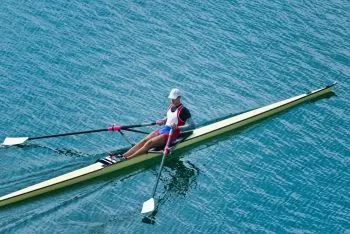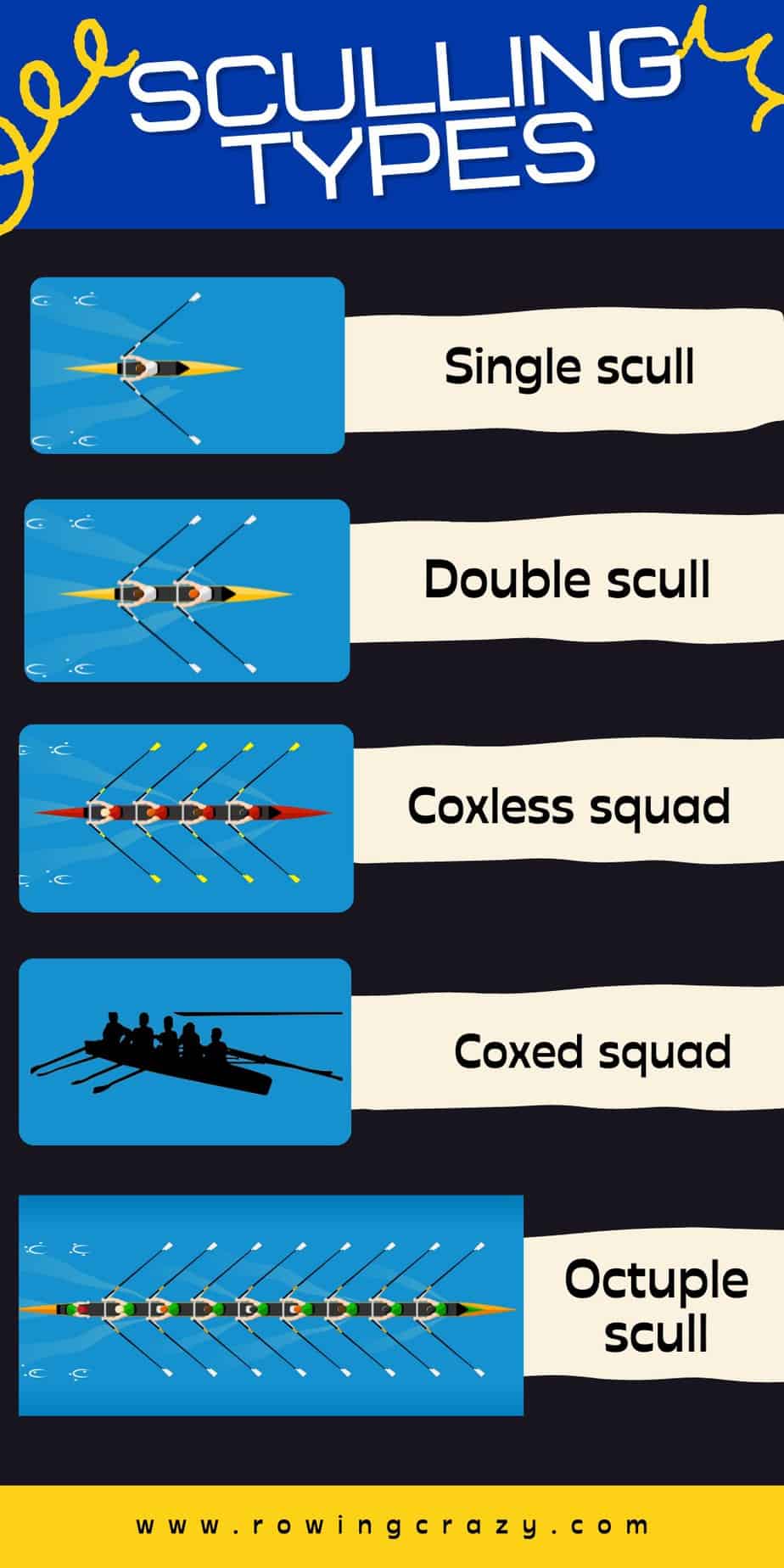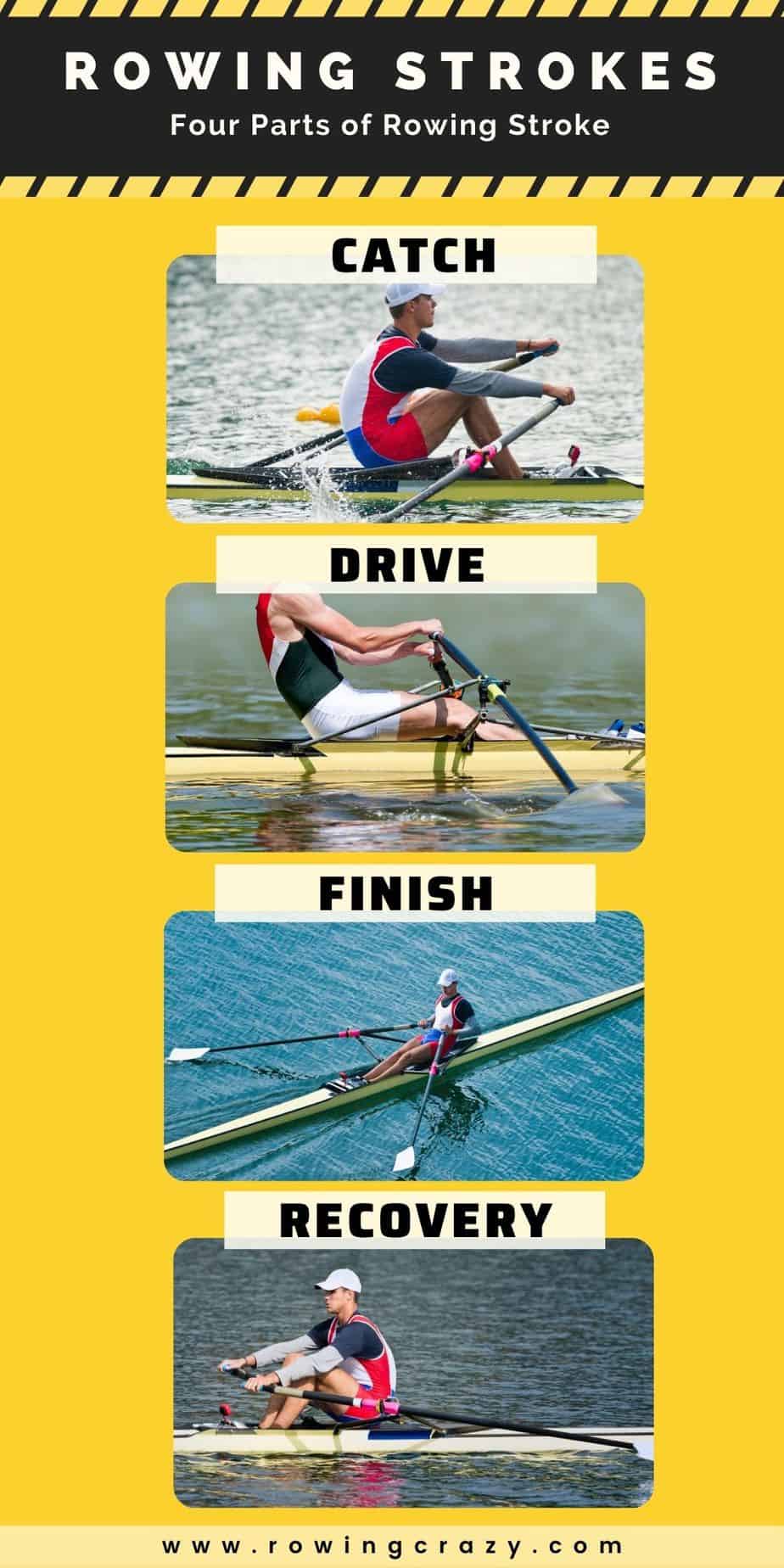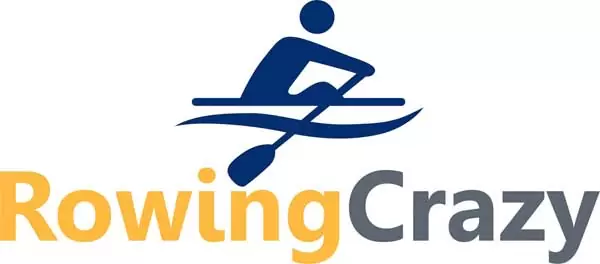
Hi everyone! Petra here and today, we are going to talk about real rowing terminology.
Whether you are an old hand at rowing, or you’ve used a rowing machine but you’re now considering rowing in a boat, you’ll want to become familiar with rowing terminology.
Rowing began as an easy way for the ancient Greeks and other civilizations to move people and goods across the water. I bet the first “races” were friendly competition, where rowing crews vying for passengers claimed their boat was the fastest because they had the best rowers.
Like many sports, rowing has its own language or terminology. Whether you are a spectator or competitor, knowing the lingo will help you understand the sport.
In this article, I want to talk about sculling, what this means, what a scull is, and other useful terms.
Grab a cup and take a seat. This is going to be a fun and interesting journey.
What Is Sculling in Rowing Terms?
While rowing is the general term that we use for the sport itself, there are actually two types of rowing events, sculling events and sweep rowing.
Sweep rowing involves just one oar blade per rower. This means that you would need at least two people to keep the rowboat moving in a straight line. There can be more than two rowers in the boat, with the maximum number being 8, but each boat must hold an even number for this system to work.

Sculling is what most people are referring to when they speak of “rowing”. Sculling involves a rower (or rowers) holding a pair of oars, one in each hand, to propel the boat.
- Related Post: How Much Does A Rowing Boat Weigh?
What Is the Difference Between Sculling and Rowing?
If the rowers are holding two oars, they are sculling. If they are using only one oar, they are sweep rowing. Both of these terms are generally lumped under the term “rowing” but are distinct from each other.
What Is the Difference Between Rowing and Crew?
This can be confusing especially because different countries use different terms.
Rowing and crew are actually the same things. You might hear someone refer to the sport of crew, which is sometimes the term used by American colleges when referring to rowing. For a more in depth look please read my crewing vs rowing article.
Most Americans will call the people in the boat a “crew” or a crew team, and what they are doing is rowing, but don’t let these terms confuse you.
If you hear someone announce that a crew is starting, for example, they mean that the race is about to start, not that they are looking for new members to jump in the boat, so don’t jump aboard!
- Click Here to Learn How to Improve Your Water Rower Technique
What Is a Scull Boat?

You may hear the boats used in rowing called several different things.
Sometimes, they are simply called boats. In many events, they are called rowboats or rowing boats. To their users, however, they are usually called scull boats, sculls, or shells.
Professional rowers, such as the United States rowing association, love their shells so much, they frequently give them names with great honors. You will probably never hear someone name their scull “Skippy” or “Little Bit”. You’re more likely going to hear names like Relentless, Anarchy, or even Valkyrie and Millennium.
Yes, the rowers themselves sometimes create sweet little nicknames (such as Mindy for the Millennium), but it is considered to be bad luck to use a boat that hasn’t been named.
- Related Post: Where Did Rowing Originate?
What Is a Scull, Then? Is It the Boat?
Here’s where its easy to get confused.
All rowers are sculls, but not all shells are considered sculls.
A scull is also what we call a person who is sculling, not sweep rowing.
It might help you to start calling the boat a shell and the person rowing a scull.
If the boat is doing sweep rowing, we call the boat a crew.
How Difficult Is Sculling?
Learning to scull can be a difficult endeavor. It is a good idea for beginners to start off with a wider, more stable shell to help with balance.
You might think that sculling by yourself would be easier, but it isn’t. It’s not impossible, but many rowers learn first by sculling and later joining a team to do sweep rowing.
The amount of effort is probably the same, but learning to scull takes some time and lots of practice.
- Related Post: Rowing Race Distances and Times
What Are the Crew Team Types?
When speaking of rowing, there are different boat types:
- Coxless pair: The shell has two rowers, with a single oar each. One of the rowers steers the boat using a rudder attached with cables to a foot pedal. (You can read more on coxless pair rowing here )
- Coxed pair: The same as above, but this shell will also have another person who acts as a coxswain who steers the boat and shouts encouragement. The Coxswain also watches out for possible dangers. Depending on the type of shell that is being used, the coxswain can sit on either end of the boat but generally sits at the stern, rather than the bow end.
- Coxless four: There are 4 rowers, two on the left and two on the right. One of these rowers will control the boat using the rudder.
- Coxed four: This team has 4 rowers and a coxswain to steer.
- Coxed eight: This team will have 8 rowers and a coxswain to steer.
Is this all starting to make sense? Keep reading because we are about to talk about sculling!
What Are the Sculling Types?

Like the crew teams, there are sculling types as well.
- Single scull: One person holding a pair of oars. Sometimes called a 1X, this person controls the direction of the boat by applying pressure on the oars.
- Double scull: Sometimes called a double or even a 2X, this shell has two rowers, each with two oars.
- Coxless squad: This shell will have 4 rowers, each with two oars. One of the rowers controls the direction of the boat using a foot-activated rudder.
- Coxed squad: This shell also has 4 rowers, but it has a coxswain to steer. Sometimes called a coxed quad or just a quad, you won’t see this type of crew in races. A coxed squad is usually used with beginners.
- Octuple scull: This is very uncommon, but it is good for beginners. This crew has 8 rowers and a coxswain to steer. Read more here on what does a Coxswain do and say in a race.
Don’t worry if you can’t remember what every shell carries. You will become more familiar with this terminology as you get more involved in rowing.
Is Sculling Good Exercise?
Oh yes, it certainly is!
Take one look at the sculls in that rowing boat. Do you see one ounce of extra fat on those bodies?
Rowing uses at least 86 percent of the muscles in the body with every single rowing stroke! An average person using a rowing machine at even moderate intensity can burn as much as 90 calories an hour.

Of course, sculls are accustomed to this type of exercise, but rowing races requires a huge amount of effort and, therefore, calorie burn.
Sculling is one of the best exercises on the planet, and it might just be the perfect type of cardio since it is easy on the joints but still works every major muscle group. Side Note: Learn the difference between lightweight vs heavyweight rowing
Is Sculling Harder Than Sweep Rowing?
I suppose that would depend on who your teammates are, right?
Let’s assume that you’re comparing a double scull and a coxless pair. World records show that sculling has faster times, which would lead one to assume that sculling involves more work.
Some people feel that sweep rowing is easier because you don’t have to worry about balance. On the other hand, once you’ve learned to scull, just like riding a bike, you don’t really think about trying to stay balanced.
Ask any rower for their opinion, and I bet they will tell you that the type of rowing they are doing (whether it’s sculling or sweeping) is the hardest. Or maybe they will tell you that it’s the easiest since they do that type of rowing all the time! Side Note: You might also like to read my other article where I talk about rowing a pair.
What Are the Strokes in Rowing?
While it might seem obvious that you need a great deal of power to move the shell across the water and speed to win a race, each rowing stroke must be done properly to ensure that you get the most power possible out of every stroke.

There are four parts to each stroke:
- The Catch. This is when the blade of the oar enters the water vertically. The rower is in a coiled position, their seat forward, arms extended, ready to go. The person rowing must ensure that they don’t create too much of a splash and that they are in sync with the rhythm of the boat and their teammates if they have any.
- The Drive. This is where the rower uncoils their body, releasing their strength and transferring it to the oar. You will see the rower lean back and pull the oar to their stomach area. This takes tremendous core strength to hold this position and get all the power they can from this stroke.
- The Finish. Sometimes referred to as the Release, this is when the oars are removed from the water. The rower will move the oar handle down and out of the water. At the same time, they will turn the blade so that it is horizontal, rather than vertical. This movement of the oar handle is called feathering the oar.
- The Recovery. The oar is now out of the water, the rower sliding their seat forward, preparing themselves to enter the Catch position and start again.
The shell moves the fastest at the Finish stroke and the slowest on the Catch stroke. However, a faster stroke doesn’t necessarily win the race.
To win a race, rowers need to get the most power out of their strokes, not necessarily more strokes.
To help you visualize this, imagine riding your 10-speed bike. In first gear, you may be pedaling 30 times a minute, but in 8th gear, you may only need to pedal 20 times a minute to cover the same distance. Sure, 8th gear is harder to pedal, but you won’t have to pedal as fast.
The same is true with rowing. It’s the excellent technique and timing that make all the difference in racing your shell.
- Click Here to Read Our Article on Master Rowing Issues
What Do I Need to Know about Racing?
Racing is always fun, whether you are a competitor, spectator, or non-competing rower.

When speaking of rowing, a typical event is 2,000 meters. This is referred to as a “sprint.”
You will find sprints in national, colleges, world, and Olympic events. There are typically 6 to 8 lanes with buoys marking every 500 meters.
- Staying in your lane – There is no penalty for going outside of your lane, only if you obstruct or interfere with another boat. For the fastest time, however, you will do better to stay in your lane!
- False starts – Rowers are allowed one false start per race, however, two false starts will get you expelled. If there is a malfunction, such as an oar that breaks, the race will stop and resume after the repair has been made.
- Aligning the boat – At the start of the race, someone from each team will hold the stern to ensure the boat is in the proper position. An official of the race, known as an Aligner, checks each boat to see that everyone is in the correct lane, facing the right way on the course and that everyone is evenly aligned so that no one has an unfair advantage.
- Head races – During the fall, just before the season ends, you might see a head race. These are often 2 or even 3 miles long. Each boat starts at 10-second intervals and they must steer through an obstacle course, such as underneath bridges or around trees. Head races involve not only speed but accuracy to and skill avoid hitting obstacles.
No matter what type of race you enjoy, I find that racing is the most exciting aspect of rowing, whether it’s a junior’s 1,000-meter race of the events at the Olympics.
How Much Does a Rowing Scull Cost?
Oh, already considering getting into the game? I don’t blame you there, this sport is completely addicting!
Rowing boat types will vary considerably in cost depending on whether it’s new or used, old or barely used, and so on. Think about the price of a car. A used VW Bug will cost considerably less than a Cadillac Escalade, right?

Expect to pay anywhere between $1,500 to $15,000 for your scull. Beginners should opt for a less expensive model until they get the hang of things. Trust me, most beginners give their sculls a few bumps and scrapes as they learn.
In addition to the scull itself, you will need to consider the cost of any equipment you might need or want, such as a trailer to pull the scull, or roof racks on your vehicle, oars, slings, and maybe even an onboard computer system.
New boat manufacturers will help you find the right boat for your skills, abilities, size, and preferences.
If you buy used, take along someone who is experienced who can examine the hull for possible damage, as well as inspect the oars for soft spots or other problems.
New or used, you are going to love this sport.
The Bottom Line
Rowing may have gotten its start more than 1,000 years ago, but it didn’t really gain popularity until the 1850s or so.
Even today, you will find a lot of people know who won the Olympic gold medal for swimming, but not who won the Olympic gold medal for rowing.
However, I can see a new trend starting. Over the past decade, I’ve seen more and more people (and a surprising number of middle-aged women) taking up rowing for sport.
If you enjoy using your rowing machine at home and aren’t interested in rowing on the water, that’s good too. You might still enjoy watching the races.
If you only want to row for physical fitness, enjoy the beauty of nature, and maybe enjoy some camaraderie, that’s good as well.
If you are the competitive type, and you yearn to tackle a race on the River Thames, you can do that too.
Perhaps that’s what makes rowing appealing to so many. No matter where your interests lie, you can find a place that suits you just fine.
I hope you found this article helpful and fun. Feel free to share it with your like-minded friends.
Get on that boat, and let’s keep rocking and rowing!
Written by Petra Amara – RowingCrazy.com
CEO & Founder of RowingCrazy, National Rower, Coxswain Womens Eight Team, Rowing Coach & Writer
Petra is a Mother of two and owner of Rowingcrazy.com. Petra lives and breathes rowing, she also has a passion for writing which lead her to start RowingCrazy.com to share her rowing experience and expertise with others.






Pingback:
Pingback:
Pingback:
Pingback: Problem of Rowing Coaching for Masters Groups | Rowing Crazy